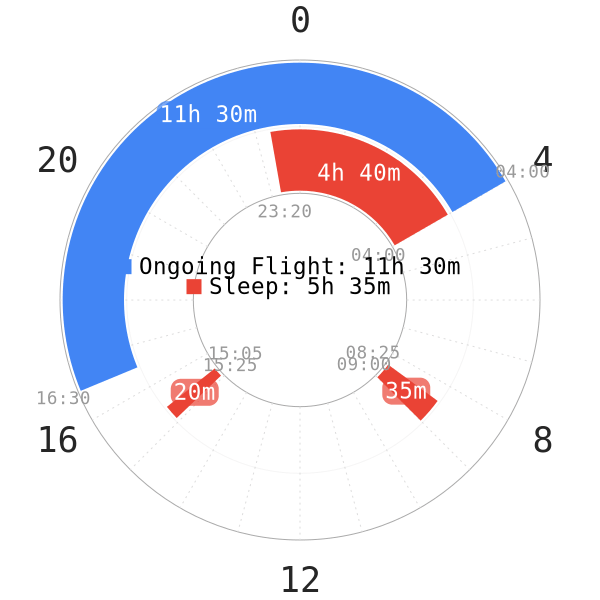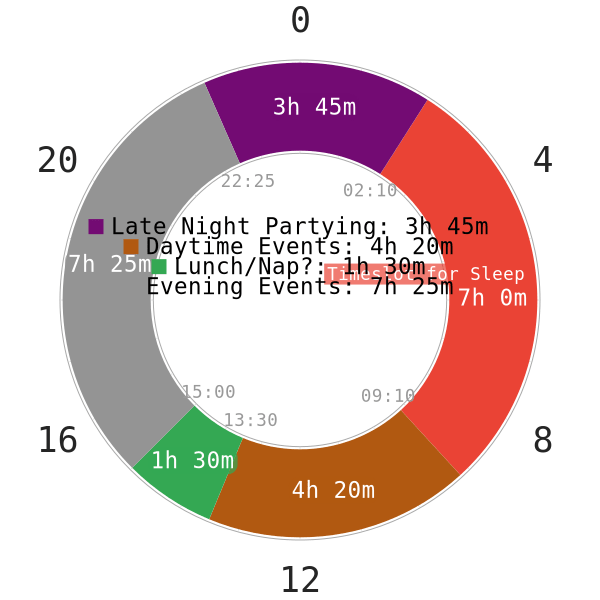Introduction
We may not be fully aware of how we sleep while travelling. However, it is quite a common thing to observe a traveler napping elsewhere in their own car or in airplanes. Thus, the question then becomes whether polyphasic sleeping is actually a natural sleep regime under certain social conditions. As it turns out, such processes are far from simple.
Travelling while maintaining a polyphasic schedule is possible as a starter. However, it is overall difficult to pull off once you factor in multiple precautions. Regardless, this post will detail certain strategies you can try to adopt to sustain your polyphasic schedule. As such, we will cover multi-time-zone travelling and other types of travelling instances.
Time Zone Travelling & Ongoing Polyphasic Sleep Adaptation
Survivability Factors
This section will focus primarily on travelling occasions that involve a change in time zones. Most importantly, how likely your adaptation will survive also depends on a lot of factors. Thus, the following factors are important to keep in mind:
- Adaptation difficulty of your polyphasic schedule
- Your polyphasic/napping experience
- How many time zone differences you need to travel
- How long you are staying in the destination
- Your health conditions
- Your work schedule upon landing at the destination
The best polyphasic schedules to handle long travelling occasions often have a reasonable amount of sleep. This includes multi-time-zone travelling. Typically Biphasic sleep has the best shot, followed by flexible “-AMAYL” schedules.
Solutions
If there are changes in time zones during adaptation, there are three recommend options:
- Sticking with the original schedule
- Rotating the schedule to fit the new time zone
- Returning to monophasic sleep
Other Notes
However, depending on the duration and nature of the stay, rotating the schedule may or may not be possible.
- Note that rotating the schedule will set adaptation progress back. The setback of around a week for each rotation is a good estimate, but it is dependent on several factors.
- During adaptation, it is important to stick to all sleeping times. As a result, many people prefer starting their adaptation after they have reached a new time zone.
- Alternatively, you can aim to adapt to your polyphasic schedule for some time before the travelling event. Your schedule will be a lot sturdier, but there is no guarantee it will survive the travel.
- After being adapted for at least a month, flexing is likely the best logical choice if you have to miss some nap times. Starting a gradual adaptation or temporarily switching over to a harder schedule are also viable options.
- If you are staying at the new location for an extended amount of time (at least ~2-3 months), you may begin a new adaptation altogether. However, plan carefully for the return trip.
- Long-term polyphasic sleepers or nappers, however, can handle more sleep disruptions with their entrained ability to nap well under difficult conditions. Thus, they may still be able to flex their sleep times and continue their adaptations at the new time zone.
Tips for Jet Lag
Jet lag happens when you travel through different time zones. It is basically the misalignment of the internal body clocks with external time cues1. If you change your schedule during the stay, you will initially struggle to fall asleep fast in the new time zone. Thus, your schedule will suffer.
Depending on how long your trip is, how long you stay in the new region, and how long you have been polyphasic, the travel can be hard or relatively easy. This will reflect on the need to re-adapt to the schedule during and after the trip. Another factor to consider is the possibility to maintain the schedule on the plane and in the airport.
- If you have decided to return to monophasic sleep, just rest when you feel sleepy enough.
- Try to get a core sleep or a nap in the plane. Time it so that when the plane lands, you wake up. Napping while travelling has demonstrated the ability to help cope with jet lag1.
- Do not time your naps willy-nilly. This is because naps can interfere with your nocturnal core sleep when you arrive at the destination.
Tips to Maintain a Schedule
Try minimizing the over- and undersleeps if you can only stick to your schedule.
- Use alarms wisely in the plane. Mechanical alarm clocks as backups are smart, as there could be problems with phones. Furthermore, to avoid troubles with loud noises, you may hook your alarm setup to your ears. However, this is risky because high volumes can damage your hearing.
- Nap in the airport if necessary. However, try not to take a core in the airports, as you will be vulnerable to thefts. Refer to the video above for how to prepare for napping outside your home.

- Align your core time with the flight so that you can sleep most of it during the flight.
- Prepare a “do not disturb” sign, with a sleeping mask and airplane pillow if possible.
- Tactical oversleeps could possibly be an idea during this critical time. Your safety and well-being should be a higher priority than adapting quickly. Thus, if you have to skip several naps or parts of the core, taking more naps could benefit you.
Driving
Find out more information on tips on how to fall sleep in a car in this blog post! As a side note, NEVER schedule your naps on the way to work/school. This is when you are sitting inside a vehicle. During adaptation, you cannot control the arrival timing of these vehicles!
If your job requires a lot of driving, for example a trucker, you should do the following:
- Avoid adapting to schedules with low amounts of sleep. Ideally, you should wait until a long holiday before attempting a polyphasic schedule. Sleep deprivation increases the risk of having microsleeps, which can lead to a crash.
- Wait for sleep inertia to dissipate. It matters when you start executing tasks with constant attention and vigilance! Feeling groggy while driving for example is a horrendous idea. During this state, your reaction is slow and your alertness is impaired. Thus, you can drink some warm water or splash water to your face to accelerate your mental alertness.
- Constantly test yourself with motor tasks on your polyphasic schedules to see how well you perform on a consistent basis. This does not matter which schedule you are on.
- During intense sleep deprivation, you may experience sleep deprivation or sudden waves of tiredness. This as a result could pose danger to yourself and others. When you are sleep deprived, your cognitive functions are also weakened with slower reaction time. These may be hard to subjectively assess and could incite poor judgement in critical situations2. Microsleeping can be fatal under these conditions!
Travelling with Monophasic Sleepers
Unfortunately, up to date, very few polyphasic sleepers can sustain their schedule in this situation. Several-day travelling and partying occasions often end up wrecking the sleep schedule, including adapted and flexibly resilient ones like SEVAMAYL.

- Their whole sleep pattern often becomes random, with poorly timed night sleep and random napping to make up for the tiredness.
- They often have to skip naps because of the necessity to stay awake for too long in these events. Thus, reversion to monophasic sleep is unavoidable.
- Out of all schedules, flexible, adapted Biphasic schedules can withstand certain social events. This includes Biphasic-X and Everyman 1 because of the simplicity of a short daytime nap. These schedules have enough total sleep to survive drastic changes in scheduling.
- If possible, said sleeper can take this nap in a car or when there is no important event going on around them.
- Any other schedules with more than one core sleep, including Segmented, becomes a liability to maintain. This is because such events often involve staying up late and/or consuming a lot of drinks.
- The dark period before night sleep may also be burdensome to maintain. Overall, there are just too many disruptions for sleep quality.
- Despite the overall bad news, if these events do not last more than just a couple days, you may be able to salvage your adapted schedule. Otherwise, your adaptation progress will be completely scrapped.
Therefore, your best course of action is to wait out these events before attempting an adaptation. Barring the non-reducing or extended biphasic schedules above, all the other schedules unfortunately will crumble with severe restrictions for sleep.
Main authors: Crimson & GeneralNguyen
Page last updated: 15 February 2021
